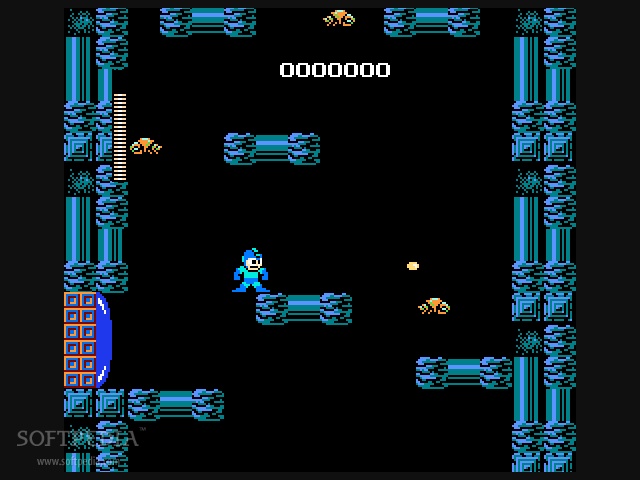Metroid
is a fully open and explorable 2D platformer released for the
Nintendo Entertainment System/Famicom back in the mid-eighties. It
has since gone on to be one of Nintendo's premiere
action/adventure properties, with award winning games such as Super
Metroid
on the Super Nintendo, and the Metroid
Prime
series on Gamecube and Wii. Furthermore, the series protagonist Samus
Aran become a shining example of a strong, female
protagonist in games (pathetic attempt at deeper narrative in
Metroid: Other M
on
the Wii aside). It also takes half the credit for establishing the
“Metroidvania” genre, a type of platformer with open worlds as opposed to linear corridors, along with Castlevania.
Despite this, Metroid
is not a game that is as fresh today as it was twenty-seven years
ago. Though amazing for the time and beloved by those who remember
playing it upon release, game design as a philosophy moved so far beyond
Metroid
in such a short time that what may have been acceptable shortcomings
or even respected rules back in 1985 stand out as serious flaws
today.
 |
| Though the environment tiles are highly detailed, the backgrounds are just flat black due to the NES's shortcomings and the already unstable framerate. |
To
understand just what is flawed about Metroid
and why it is flawed, we need to look at a game with similar
problems: Castlevania
II: Simon's Quest.
The first issue is that of control or lack thereof. Under normal
circumstances, there is nothing wrong with Samus Aran's run, jump, or
shoot. The controls are loose and maybe a little slow but nothing
that can't be learned in time. It is the interruption of these
controls that cannot be excused. Each time an enemy hits Samus, she
is knocked back several tiles and player control is briefly revoked.
Due to this, the player will often find themselves hitting other
enemies or falling into deadly pits. The high number of enemies at
any moment, which slows the game's framerate down considerably, also
does not help this issue. Due to the extremely limited range of your
shots, and the fact that most enemies take at least four hits to
kill, getting hit by enemies and thus knocked back is almost
inevitable. By 1987, in Castlevania
II,
players were already complaining about knockback from hits and so, as
a general rule of game design, knockback in extreme forms was
discouraged. One need not look further than the original Mega
Man
for proof that knockback did not have to be as extreme as the forms
seen in Metroid
or Castlevania
and that it could still be an effective deterrence from running into
enemies.
 |
| Swear to God, this just came up coincidentally when I searched for "Metroid Screenshot." |
The
pits are another matter entirely, as they hinder the player's ability
to jump. In most games, you fall into a pit and you die. In Metroid,
if you fall into a pit you are tortured, quickly losing health over
time until you either die or escape. With enemies dive-bombing you
the whole time, pits become frantic moments of frustration with the
player unable to jump or shoot effectively, at least until you've
found bombs which allow you to hit enemies in the air and bounce on
the explosions.
| Finding these things is almost like cheating. |
My biggest issue with the game, though, is the lack of
feedback. Items you find are complete mysteries until you discover
their use for yourself as there are no tooltips or demonstrations.
Missile doors don't open unless you shoot them with five missiles,
and yet there is no sense that your shots are having any effect on
them at first. There is no map of the world and so it is incredibly
easy to get lost or have the sense that you are on a wild goose chase
for items that may or may not exist, the purposes of which are
uncertain. Hidden passageways containing important items, like under
a normally torturous lava pit, also do nothing but confuse the player
without proper visual feedback to the change in rules.
 |
| In Metroid, finding something rewards you with a tune. You are never shown what your reward is until you figure it out for yourself. |
Several
of these problems were eliminated in future iterations of the Metroid
series. In Metroid
II
on Gameboy, Samus's shots traveled the full distance across the
screen, making enemies easier to hit. Super
Metroid
was much faster; had greatly reduced knockback; unlike the original
Metroid on
NES, enemies did not take four or five hits to kill but just one or
two, keeping the pace of the game fast and tight; and save states, as
opposed to Metroid's
24 character password system, were a very welcome change. It is good
then that Nintendo learned what they needed to for future iterations,
and learned it quickly. Metroid
is a prime example of how fickle game design is as a philosophy, and
how in just a few short years a game can go from being a masterpiece
to a goulash of mechanical missteps.
No comments:
Post a Comment